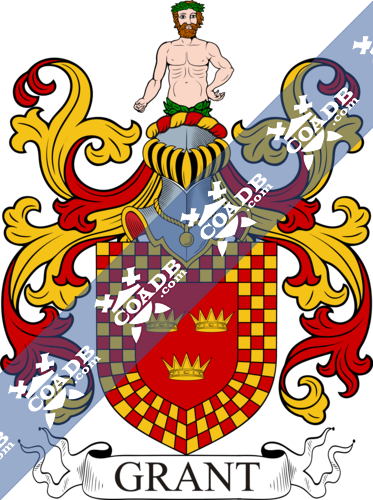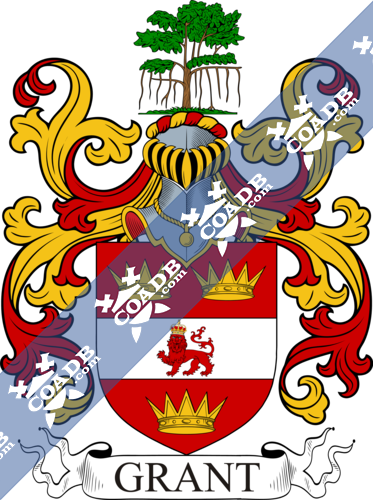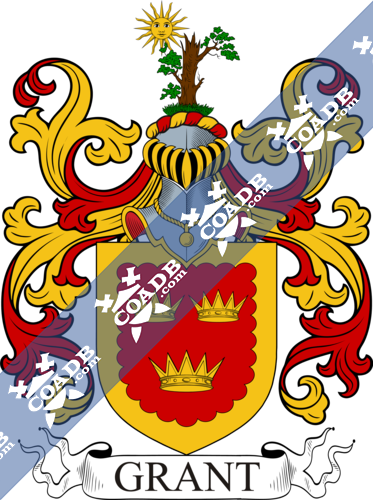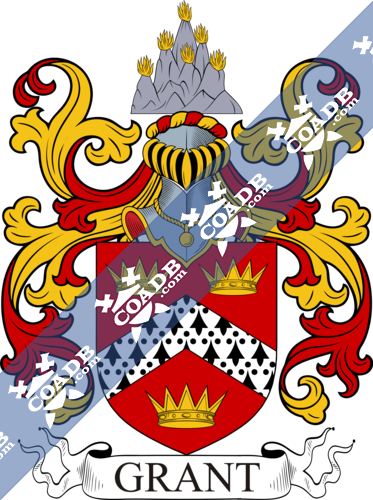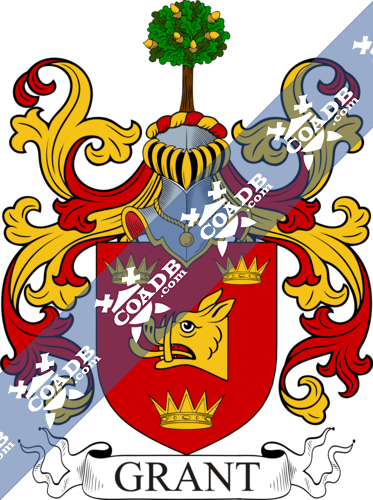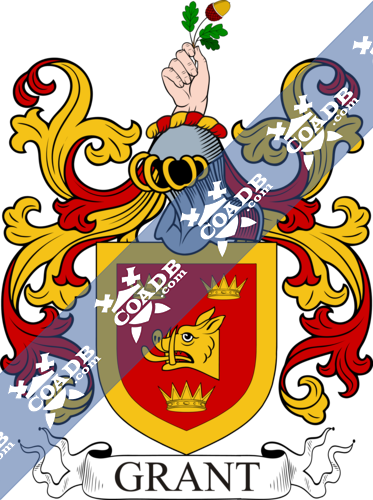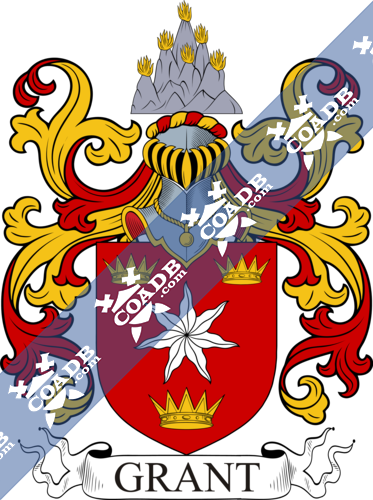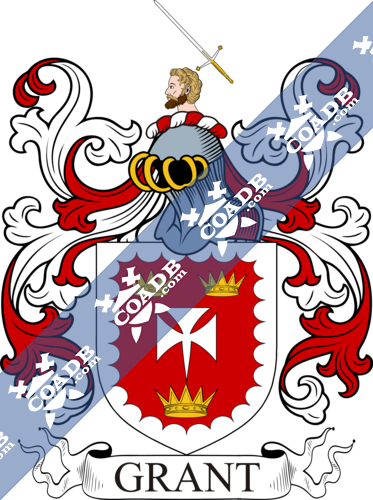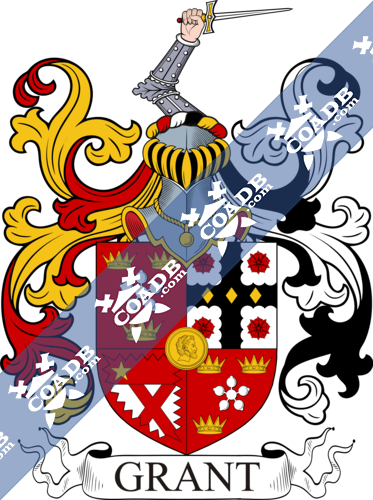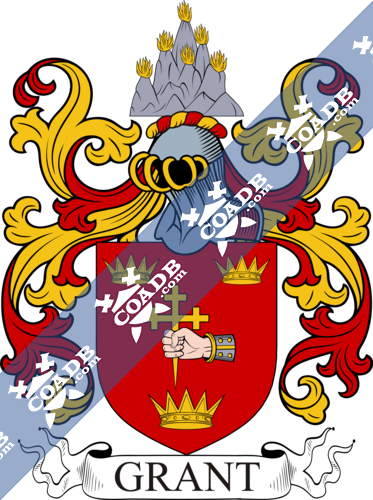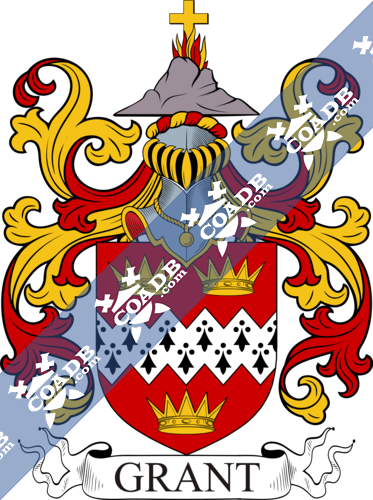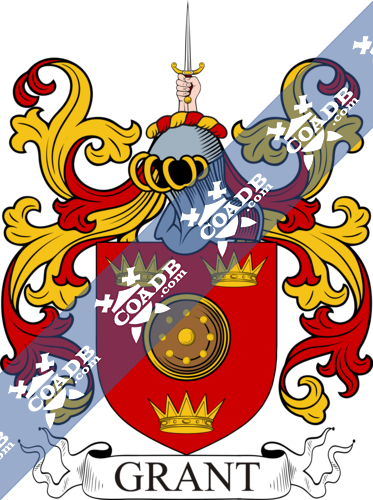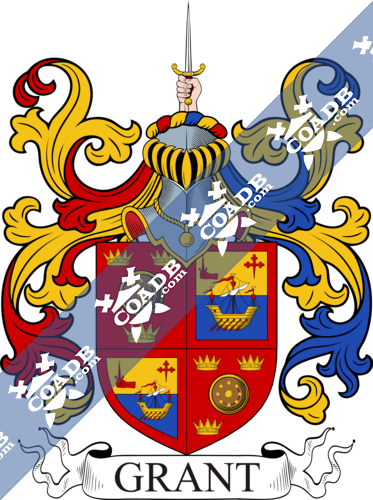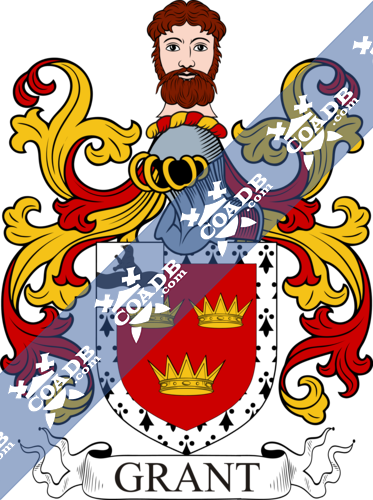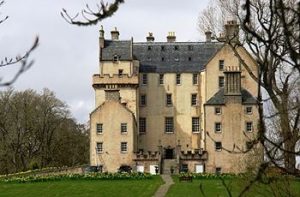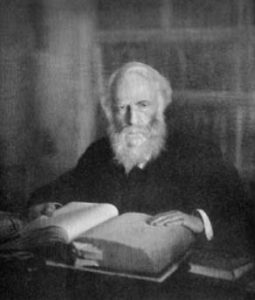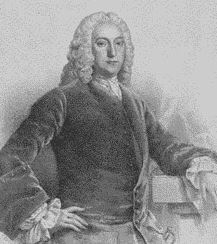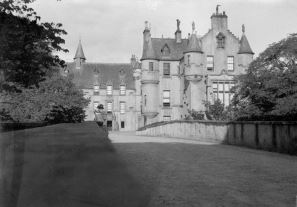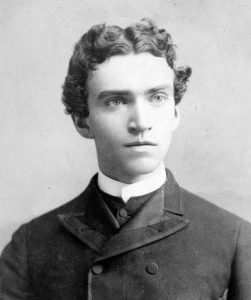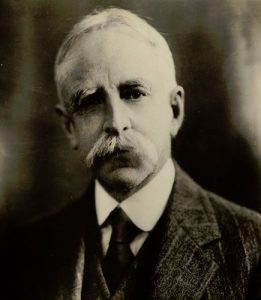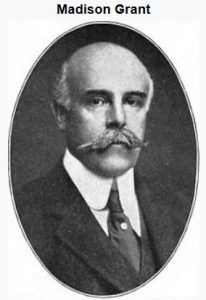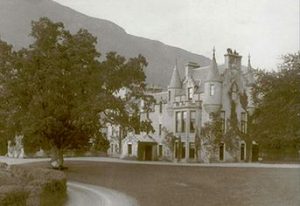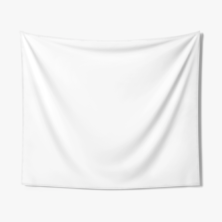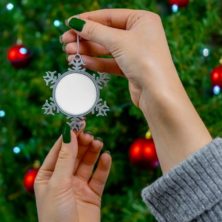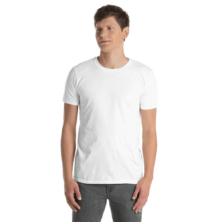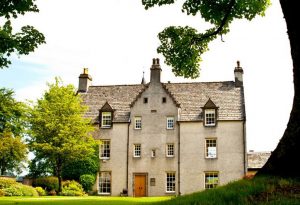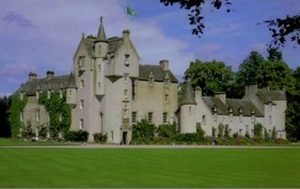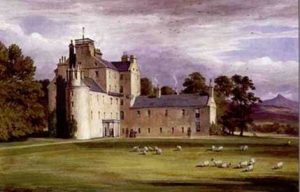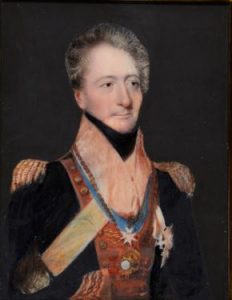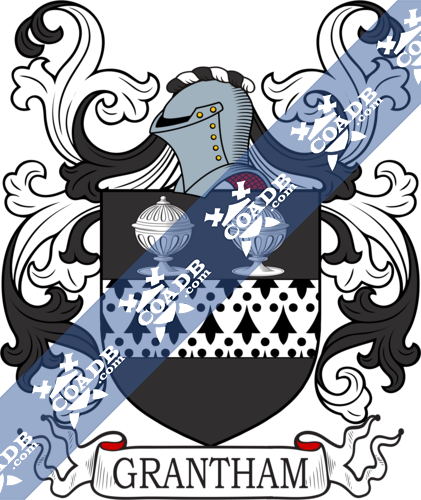Grant Family Crest, Coat of Arms and Name History
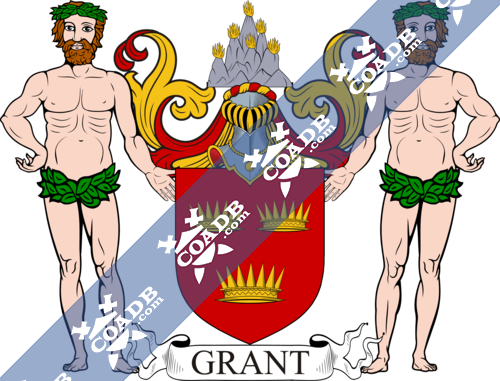
Grant Coat of Arms Gallery
Don’t know which Coat of Arms is yours?
We can do a genealogical research. Find out the exact history of your family!
Learn MoreGrant Surname Name Meaning, Origin, History, & Etymology
This last name has two different origin theories or meaning. First, it may be derived from the nickname “le grand”, meaning great or large, a sobriquet for a person who was big or broad in physical nature, a surname which became prominent in Scotland. In this theory, the name derived from the Latin word grandis. Second, it may have derived from the personal (first) name Granta, short for Grantham, which derives from a pre-Roman word meaning a slow river. In these theories, it was a name of Norman origin that introduced into the British Isles, as one author states “by the Bissets on their return from their exile of 1242”. One author claims they family descends from the Grants or Grands of Grand Court in St. Michael du Treport, France, where they were the Counts of Eu. However, if one reads the pedigree available for this name at wikitree.com, the ancestors of this family were Danish rulers in Norway dating back to 1000 AD. Bearing in mind there was a Viking presence in Normandy since the 800s AD, these theories may not be as separate as they seem at first glance.
One author also states that in Saxon, the word or name Grant signifies crooked or bowed, perhaps a crooked bridge or winding river (similar to the slow river theory mentioned previously). This same author mentions that in old Irish, Grandha signifies ugly or ill-favored. Grande means dark or swarthy. There was a ride of Grants called Clan Chiaran, it is the same as Clan Grant. The author goes on to state “Thus the surname might have been taken from a progenitor that was Chiar or Grant, that is to say, a swarthy or gray—headed man, and, though, in time, Grant became the common and prevailing surname, yet some always retained the other name, Chiaran, and are called Clam Chiaran”.
In Scotch, the name is Griantach or Sliabgh Grianus. In his 1857 book, Bernard Homer Dixon proffers an interesting theory that ties the surname origins to the family crest: “The heath of Grian or the Sun, in Strathspey, where there are many Druidical remains, is doubtless the place from which the clan Grant derived their appellation; and their crest, a burning mount, apparently has reference to the worship of Baal, after whom May Day is still called in Scotland Bealltainn, Baal’s fire”.
Ultimately, the name has different origin theories and meaning and may be Danish, English, French-Norman, Saxon, or Gaelic extraction. In some cases, it may be a spelling or Americanized version of the German last name Grand or Grandt.
Sir Robert Grant, the Sherriff of Inverness in 1206 AD, was the founder of the Scottish clan Grant. The family held lands and titles at Strathspey. In Scotland, the name was first established in Interness-shire, an area where there were once Pictish and Norwegian coastal strongholds.
Spelling Variations
Some spelling variants or names with similar etymologies include Grante, Graunt, Graunte, Grand, le Grand, Legrand, and others. It is an occasional synonym of Granny.
Popularity & Geographic Distribution
The last name Grant ranks 192nd in popularity in the United Status as of the 2000 Census. The name ranks particularly high in the following five states: Maine, South Carolina, New York, Connecticut, and New Hampshire.
The surname Grant frequency/commonness ranks as follows in the British Isles: England (105th), Scotland (29th), Wales (187th), Ireland (298th) and Northern Ireland (155th). In England, it ranks highest in counties Leicestershire and Hampshire. In Scotland, the surname ranks highest in Moray and Banffshire. In Wales, it ranks highest in county Glamorganshire. In Ireland, it ranks highest in Kilkenny. In Northern Ireland, it ranks highest in Armagh.
The name is also present throughout the remainder English speaking world: Canada (88th), New Zealand (49th), Australia (92nd), and South Africa (421st).
The 1890 book Homes of Family Names by H.B. Guppy, states the following in regard to this surname: “Grant is not always a name that hails from the Scotch side of the border. There are English Grants as well as Scotch Grants. To the former belong those of Warwickshire, Lincolnshire, Dorset, and Devon, who evidently are the present representatives of the numerous Le Graunts occurring in the 13th century in the counties of Oxford, Wilts, Lincoln, Notts, Norfolk, Essex, etc. (H. R.). The name of Grant occurred in Warwickshire in the reign of Richard III”.
Early Bearers of the Surname
One of the earliest known bearer of this surname was Hugo Grandis in the Geld Roll of Warwickshire in 1084 AD. Gilbert Grant was recorded in the Eynsham Cartulary in the city of Oxford in 1183 AD. William le Grand was listed in Norfolk, England in 1204 AD. William le Grant was documented in the Assize Court Rolls of Yorkshire in 1219 AD. The Hundred Rolls of 1273 AD, a census of Wales and England, known in Latin as Rotuli Hundredorum lists five bearers of this surname: Gregory le Grant (Cambridge), John le Graunt (Oxford), Richard le Graunt (Wilts), Hamo le Graunt (York), and Roger filius Grant (Salop). The Poll Tax of Yorkshire in 1379 AD lists one bearer of this last name: Thomas Graunte. William le Graunt, county Berkshire, was documented in the fourteenth century in the Testa de Neville, sive Liber Feodorum, as was one Ralph le Grant in county Wilts. Early marriages involving this surname include Patrick Graunt to Jane Belgrave at St. Dionis Backchurch and Samuell Grant to Sara Hower at St. Peter, Cornhill in 1648.
George Fraser Black’s 1946 book The Surnames of Scotland, states the following in regard to this last name: “John le Graunt, a Scots prisoner from Dunbar, was warded in Gloucester Castle in 1297 and in the same year was freed on mainprise along with Ralph le Graunte. Thomas le Graunt was plundered of his goods and chattels and one of his hands cut off by thieves maintained by Sir Duncan de Feringdraut in 1305. and Maurice Grant was attorney for the provost of Inverness in 1330 and afterwards sheriff of the same town”.
Grant Family Tree & Grant Genealogy
Grant of Glenmoriston
The original grant of the lands and barony of Glemoristin in favour of the progenitor or ancestory of the present family is the charter by King James IV to John More Geant, of Culabock, dated at Stirling, 1509. In 1689, Patrick Grant of Glenmoriston, was in arms at Killecrankie, and in the rising of 1715 and 1745, the Glenmoriston Grants opposed the Government. There are many derivatives branches, including Grant of Carron, Grant of Lynachoarn, Grant of Avimore, and Grant of Croskie. Patrick Grant of Glenmoriston married the daughter of John Grant of Croskie. He had a son also named Patrick. This Patrick married Henrietta, 2nd daughter of Patrick Grant of Rothiemurchus, and had four daughters and four sons with her. His eldest son and heir was John Grant, who was a Lieutenant Colonel in the army and a Colonel in the Inverness-shire militia. He married Elizabeth Townsend, daughter of Major John Grant, son of Mungo Grant, and had issue with her: Patrick, James Murray, Harriet (married Thomas Fraser of Balnain), and Ann (married Roderick K. Mackenzie of Flowerburn). His son James Murray Grant was an Esquire of Glenmoriston and Moy, county Moray, as well as a Justice of the Peace and Deputy Lieutenant. He married Henrietta, daughter of Ewen Cameron of Glenevis, and had the following issue with her: John (Captain of 42nd Royal Highlanders, married Emily Morrison and later Anne Chadwick, had issue named Ian Robert, Ewen, Frank Morrison Seafield, Heathcote Salusbury, and Emily), Ewen, Patrick, Hugh, James Murray, Jane (married William Unwin), Elizabeth (married T.A. Pierson of Gwynd, Arbroath), Ellen, Harriet (married F. Morrison of Hole Park), and Isabella. He was succeeded by his grandson Ian Robert in 1868. Ian Robert James Murray Grant was an Esquire of Glenmoriston, county Inverness and Moy, county Moray, Scotland who was born in 1860. The Grant Coat of Arms (erroneously called the Grant Family Crest) is blazoned in heraldry as follows: Gules, three antiques or eastern crowns or. Crest: A mountain in flames proper. Motto: Stand firm.
Grant of Hillersdon House
This family descends from Grants of Beldorney, a branch of the ancient Scottish clan of Grant. Charles Grant, son of James (born 1721), married Charlotte, daughter of John Grant of Bush Hill, and had the following issue with her: William Charles, Christina Maitland (married John Craigie), Charlotte (Vice-Admiral Robert Craigie), Isabella Jane (married Reverend Richard Vautier, Vicar of Kenwyn). His son William Charles Grant, Esq. of Hillersdon House, Devon, was Lord of the Manor of Cullompton, Justice Peace and Lieutenant in the 1st King’s Dragoon Guards, and was born in 1817. In 1843, he married Maria, daughter of William Henry May, and grand daughter of Joseph May, and had the following issue with her: William, William John Alexander, Charles Robert Arthur, Charlotte Elizabeth, Mary Isabella, Francis Louisa, and Anna Maria.His son William John Alexander Grant was an Esquire of Hillersdon House, Devon, England who was born in 1852 and succeeded his father in 1877. The Grant Coat of Arms (mistakenly called the Grant Family Crest) is blazoned as follows: Gules, a boar’s head couped in fess between three eastern crowns or. Crest: An oak tree fructed proper. Motto: Suose robore firmat.
Grant of Kilgraston
The Grant genealogy of this branch of the family tree begins with Patrick Grant, Esquire of Glen Lochy, in Strath Spey, county Inverness, Scotland (an estate which he alienated after being held by his predecessors from the period when they branched off from the Grants of Grant, Chiefs of the ancient clan), lineally descended from John Grant, of Grant, 9th Chief of the Grants of Grant, and married Beatrix, daughter of Donald Grant of Inverlochy, and had two sons with her: John and Francis. His son John, went to Jamaica, and became the Chief Justice there in 1783. He purchased the estates of Kilgraston and Pitkeathly. He married Margaret Macleod, but died in 1793 without a male heir. He was succeeded by his brother, Francis. In 1795, he married Anne, daughter of Robert Oliphant of Rossie, and had the following issue with her: John, Robert (Midshipman in the Royal Navy), Henry Dundas, Sir Francis (married Emily Farquharson, had son named John Emilius,secondly married Isabella Norman, had issue with her named Francis Richard, Ferdinand Hope, Mary Isabella, Anne Emily Sophia), Sir James Hope (Lieutenant-General in the army of Colonel 9th Lancers, married Helen Taylor), Mary Anne (Major-General Lindsay of Balcarres), and Catherine Anne (married R. Graham Spiers). He died in 1819 and was succeeded by his eldest son, John. This John Grant was an Esquire of Kilgraston and Pitkealthy, county Perth, Scotland, as well as a Justice of the Peace, Deputy Lieutenant, and served in the Grenadier Guards. He was born in 1798. In 1820, he married Margaret, daughter of Francis, Lord Gray, and had an only child with her: Margaret, Baroness Gray of Gray and Kinfauns Castle, who married David Henry Murray. He later married Lady Lucy Bruce, daughter of Thomas, Earl of Elgin and Kincardine, and had issue with her: Francis Augustus (Lieutenant and Adjutant 79th Highlanders), Charles Thomas Constantine of Kilgraston, Arthur (11th Native Madras Infantry), John Ludovick, Robert Henry (Captain of the Royal Army), Alan Rudolph, Alaric Frederick (Lieutenant Royal Navy), Mary, Annie (married J. Brooke Brooke, Rajah Mudah of Sarawak, Borneo, had two sons named Basil and John Charles Evelyn Hope), Matilda Catherine, Lucy (married Honorable and Reverend Charles Feilding), Eliza Louisa, Charlotte Augusta. He died in 1873 and was succeeded by his son Charles. Charles Thomas Constantine Grant was an Esquire of Kilgraston and Pitkeathly, county Perth, was a Justice of the Peace and Deputy Lieutenant who was born in 1831. In 1856, he married Janet Matilda, daughter of William Hay of Dunse Castle, and had issue with her: John, John Patrick, Lucy Blanche Cordelia, Annie, Constance Mary, Margaret, and Beatrice. He served in the Royal Navy under the service of the Rajah of Sarawak. The Grant Coat of Arms (mistakenly called the Grant Family Shield) has the following heraldic blazon: Gules, a chevron engrailed ermine, between three antique crowns or. Crest: A mountain in flames proper, with an scroll above bearing the motto “Ferte citi flammas”, but the Roman fasces erect proper was adopted by the late Chief Justice Grant and changed by patent in 1790. Motto: Leges juraque serva. They were seated at Kilgraston House and Drummonie House, Bridge of Earn, county Perth.
Grant of Kilmury
The Grant family tree begins with Captain Jasper Grant, of the Royal Navy, who in 1667, obtained the lands of Grantsown or Ballygraunt. Around the year 1667, he married Gillian Hely of Kinsale, and had a son with her named Jasper. This Jasper married Annabella Fitzgerald, and they had a son also named Jasper. This Jasper was of Kilmurry, county Cork, married Jane Vaughan, of the family of Golden Grove, but left no issue, and was succeeded by his brother, Thomas. This Thomas Grant was an Esquire of Kilmurry, in July 1719, married Anne, daughter of James Usher of Taylorstown, county Waterford. They had a son named Thomas. This Thomas was of Kilmurry and in 1748 married Elizabeth, daughter of Thomas Campion of Leitrim, and they had a son together, also named Thomas. This Thomas Grant was an Esquire of Kilmurry, and in 1792, married Sarah, sister of Sir Richard Musgrave, and had a son with her. This son was named Thomas St. John Grant, Esquire of Kilmurry, who in 1821, married Anna Esther, daughter of Reverend Alexander Grant and had the following issue with her: Sarah (married Samuel Morton Tuckey of Killindonnell), Anna, Susan Mary (married Monsieur Francis Jules Turquet, Judge of the Court Imperiale, Angers, France), and Thomas. His son and heir, Thomas St. John Grant was an Esquire of Kilmurry, as well as a Justice of the Peace and Deputy Lieutenant, and a High Sheriff of Waterford, Ireland in 1852. He was born in 1822, and in 1849, married Eliza Anna Louisa, daughter of Reverend Thomas Hoare of Glenore, and had the following issue: Thomas St. John (Kilmurry) and Edward Hoare. This family was seated at Kilmurry House, Kilworth, county Cork, Ireland. Thomas St. John Grant was an Esquire of Kilmurry, county Cork, Ireland and a Justice of the Peace who was born in 1852. In 1874, he married Margaret Anna, daughter of Edward Keily Carey of Careysville, and had two sons with her: Thomas St. John (1875) and Edward Kelly Carey (1877).
Grant of Kincorth
This branch is a scion of the Dellachaple or Clan-Chiaran, branch of the family of Grant, later represented in chief by the Earl of Seafield. David Grant of Lethendry was born in 1715. He married Margaret, daughter of Robert Grant of Glenbeg and Jobina Grant, and had seven issue with her: John (officer in the army who died serving under Lord Cornwallis during the American Revolution), Robert, Lewis, James (a military office who died at Madras), Cuthbert (a merchant in Canada), Donald, and Francis (a military officer). His son Robert was born in 1752. In 1797, he married Anne, daughter of Reverend Lewis Grant, of Cromdale, Inverness, and had issue with her: Robert (of Kincorth), Lewis (of Bombay), Robina (married John P. Grant), and Davina (married Frederick Grant of Mount Cyrus). The coat of arms is blazoned as follows: Gules, within a border three antique crowns or. Crest: A mountain in flames proper. His son Robert Grant, Esquire of Kincorth, county Moray, was a Justice of the Peace and Deputy Lieutenant, and was born in 1801. In 1859, he married Edith Anne, daughter of Reverend Thomas Eaton of county Chester, and had two issue with her: Robert Wilfrid and Edith Evelyn.
Grant of Litchborough
The Grant ancestry begins with Thomas Grant, who came from Scotland in 1743, and who married Mary Borman. They had a son also named Thomas, of Banbury, who was born in 1718. In 1744, he married Phebe, daughter of John Pinckard of Caldecote, and had the following issue with her: Thomas, Edward, John (of Leighton Buzzard in county Bedford, England, married Hannah Brooke, had daughter named Hannah who married Francis Darby of Sunniside House), Phebe (married Reverend Robinson Lawford of Towcester, had children), Mary (married Joseph Kitelee of Castlethorpe), and Elizabeth. His eldest son was Thomas Grant, an Esquire of Litchborough, who in 1776, married Anne, daughter of William Ives of Bradden. He had two sons: William (purchased the Manor of Maidford) and Edward. His son Edward Grant was an Esquire of Litchborough who was born in 1781. He married Jane, daughter and co-heiress of Robert Marriott of Badby, and had issue with her: Jane, Anne, Charlotte, and William. His son William Grant was an Esquire of Litchborough who was educated at Rugby and Brasenose College Oxford and was born in 1805. He married Francis Simpson, daughter of Richard Pack of Floore House, and had the following children with her: Arthur William, Edward, Reginald Richard Morries, Charles Eustace, Wilfred Dryden, and Edith Frances. He died in 1868. His was was Arthur William Grant, Esquire of Litchborough, county Northampton, a Justice of the Peace and Lord of the Manor of Maidford, as well as a Barrister-at-Law, who was born in 1842. He died in 1878. The Grant Coat of Arms (sometimes erroneously called the Grant Family Crest) is blazoned in heraldry as follows: Gules, a fess dancette ermine between three crowns or. Crest: A conical hill fired at the summit proper issuant therefrom a cross of calvary or.
Grant-Duff
Mountstuart Elphinstone Grant-Duff was an Esquire and Member of Parliament for Elgin, as well as a Justice of the Peace and Deputy Lieutenant who was born in 1829. In 1859, he married Anna Julia, daughter of E. Webster of North Lodge, Ealing, and fathered six issue with her: Arthur Cuninghame, Evelyn Mountstuart, Adrian, Hampden, Clara Annabel Catharine, and Victoria Adelaide Alexandrine. He was the Under Secretary of State for India from 1868 to 1874.This is a branch of the noble family of Duff, Earl Fife. The lineage goes back to John Grant, Esquire of Kincardine O’Neill, who died around the year 1799, and with his wife Margaret Miln, had a son named James Cuninghame Grant Duff, Esquire of Eden. James married Jane Catherine, daughter of Sir Whitelaw Ainslie, and had numerous issue with her as follows: Mountstuart Elphinstone (Member of Parliament), Ainsley Douglas Ainslie (Delgary Castle), and Alice Jane (married M. Obrist of Zurich, Switzerland). This family bore the following arms: Vert, a fess dancette ermine, between a buck’s head cabossed in chief, and two escallops in base or. Crest: A buck’s head proper. Motto: Virtute et opera. They were seated at York House, Twickenham.
The lineage begins with Duncan Grant, of Gartenbeg, son of John Maconochie Grant, who in the late 1400s AD settled at Gartenbeg, parish of Durhill, and were known as the clan of Donochy, and he married twice, having the following three issue: John (married Agnes Cumming and had a son with her named Sweton, who married a daughter of the Farquharson of Inveray and had issue with her named Duncan, Sir James the 1st Baronet, and Sit Ludovic 2nd Baronet), Donald (of Kinveachy, had son named Sir Sweton, 3rd Baronet), and Sweton (of Inverladenan, married Elspeth, daughter of Robert Grant of Glenbeg, had son named Sir Patrick). His grandson, Sir James Grant, was the 1st Baronet, of Dalvey, parish of Cromdale, county Elgin, who procured Dalvey from another branch of the Grant family. He was created a Baronet in 1688. In 1687, he married Agnes, daughter of Sir Gideon Scott of Highchester, county Roxburgh. He died in 1695 and was succeeded by his brother, Sir Ludovic Grant, 2nd Baronet. He died without successors in 1701. His cousin, Sir Sweton Grant, was 3rd Baronet, of Gartenberg, grandson of Donald of Kenveady. He married Margaret, daughter of Donald Grant, of Inverladenan. He died without a successor. His cousin, Sir Partick Grant, 4th Baronet, served as heir male in general. He married Lydia, daughter of William Mackintosh of Borlum, and had children with her, including Alexander and Ludovic. He died in 1755, at the age of 101, and was succeeded by his eldest son Alexander. This Sir Alexander Grant, 5th Baronet, was a Member of Parliament for Inverness Burghs, and he purchased Grangehill, which he called Dalvey. He married Elizabeth, daughter of Robert Coote of Jamaica and later Margaret, daughter of Alexander Grant of Auchterblair, and was succeeded by his brother in 1772. Sir Ludovic Grant, 6th Baronet, married Margaret, daughter of Sir James Innes, 5th Baronet, and died in 1790, having left five issue: Sir Alexander (7th Baronet), Peter (Sergeant-at-Arms to the House of Assembly in Jamaica, had two daughters), James (of Vache Park, Chalfont St. Giles and Goldington Grange, married Harriet Montagu, had two sons), Elizabeth (married Major William Grant, of Ballindalloch and later John Burnett, of Countesswell), Marjory (married Duncan Macdonnell of Glengarry), and Margaret (married Sir Eneas Mackintosh).
His eldest son was Sir Alexander Grant, 7th Baronet, in 1775, married Sarah, daughter of Jeremiah Cray of Ibsley, and had the following issue with her: Sir Alexander (8th Baronet) and Ludovick James (married Frances Povey, daughter of Sackville Hatch Lovett, and later Anna Frances, daughter of John Neave), and Sir Robert Innes (9th Baronet). He died in 1825 and was succeeded by his eldest son, Sir Alexander Cray Grant, 8th Baronet, who was a Member of Parliament from 1812-1843. He was born in 1782. He died in 1854 and was succeeded by his brother, Sir Robert Innes Grant, 9th Baronet, who was born in 1794. In 1825, Robert married Judith Towers, daughter of Cornelius Durant Battelle of St. Croix, West Indies, and had three issue with her: Sir Alexander (10th Baronet), Robert Innes (Lieutenant of the 1st Sikh Infantry, killed in battle near Jerwah Pass while fighting against the Sepoy rebels), and Anna Frances (married William Marcus Westermann of Copenhagen). He died in 1856 and was succeeded by his eldest son, Sir Alexander Grant. Sir Alexander was the 10th Baronet, and was educed at Oxford and Princeton. He was the Vice-Chancellor of the University of Edinburgh. He was born in 1826, and in 1859, married Susan, daughter of James Frederick Ferrier, and had two sons with her: Ludovic James (11th Baronet) and Percy Frere (served in Bechuanaland War 1897 and South African War 1899-1902, married Theodora Gertude, daughter of J.H. Goodrick, had issue with her named Winifred Anne St. John and Susan Ursula). Skipping forward a bit came one Sir Duncan Alexander, 13th Baronet, of Dalvey was born in 1928 and succeeded his grandfather in 1937. He was educated at Gordonstoun School. The Grant Coat of Arms (erroneously called the Grant Family Shield by some) is blazoned in heraldry as follows: Gules, three antique crowns, or, within a bordure engrailed, of the last. Crest: The trunk of a oak-tree, sprouting out some leave, with the sun shining thereon, all proper. Supports: By warrant under the sign-manual of George III, dated 8 July 1761, countersigned by the Earl of Bute, dexter, of highlander, sinister, a negro, proper. Motto: Te favente virbeo.
Grant of Monymusk
The lineage or Grant genealogy begins with Archibald Grant of Ballentomb, son of James, in 1599, married Isabella, daughter of Cumming of Erneside, and had issue with her. The eldest son of this marriage was Duncan Grant, of Ballentomb, who succeeded his father, and married Helen, daughter of Alexander Gordon of Tullock, and had issue with her, including a son named Archibald. This Archibald married Isabel, daughter of Gordon of Lichistoune, and had children with her. One of his children was also named Archibald, who in 1653, married Christian, daughter of Patrick Nairne of Cromdale, and had three issue with her: Sir Francis, Alexander, and Helen (married William Grant of Lurg). He died in 1717 and was succeeded by his eldest son, Sir Francis Grant, 1st Baronet, of Cullen, county Buchan, who was born in 1658. He became an Advocate in January of 1691. He was created a Baronet of Nova Scotia in 1705. In 1694, he married Jean, daughter of Reverend William Meldrum, and secondly Sarah, daughter of Reverend Alexander Fordyce of Ayton, and thirdly Agnes, daughter of Henry Hay. He had the following five children: Sir Archibald (2nd Baronet), William (married Grizel Miller and had issue named Janet, Agnes, and Jane), Jean (married Alexander Garden of Troup), Christian (married George Buchan), and Helen (married Andrew McDouall of Bankton). He died in 1726 and was succeeded by his eldest son, Sir Archibald Grant, 2nd Baronet. This Sir Archibald was born in 1696 and represented county Aberdeen, Scotland in Parliament from 1722-1732. He married Anne, daughter of James Hamilton of Pencaitland and later Anne, daughter of Charles Potts of Castleton. He had several issue, including Sir Archibald, 3rd Baronet. This son Archibald was in the service of the East India Company and was born in 1731. He married Mary, daughter of and heir of Dr. James Callander of Jamaica, and had issue with her named Mary (married Joseph Pickford Radcliffe), James Francis (Rector of Mertson, served in Royal Navy, married Eliza Coster, had issue named Arthur Henry and Adela Annie Churchill), and Sir Archibald Grant, 4th Baronet. Several generations later came Sir Francis Cullen Grant, the 12th Baronet, of Monymusk, county Aberdeen, Scotland, who was born in 1914. He was a Captain who served in World War II. He succeeded his brother in 1944. They were seated at the House of Monymusk, county Aberdeen, Scotland.
Other Grant Pedigree & Family Trees
The first known progenitor or ancestor of this family was Hacken I Grandt, King of East Angeles who was born in 915 AD. He married Sunsilla Swenwoman and had a son with her named Hackon II. Hackon II was born in Norway in 950 AD. He married Ashed Hardecks and had a son with her, also named Hacken. This Hacken III Richard Grandt was born in Norway in 975 AD. He had a son named Heming. This Heming Grandt was born in Norway in 1000 AD. He married Tora Adelstein and had a son with her named Andlaw Alan Grant, who was born in Dublin, Ireland in 1019 AD. Andlaw married Mora MacGregor and had a son with her named Patrick. This Patrick Grant was born in Scotland in 1030 AD. He married a woman named Maria and had a son named Simon. Simon was born in Scotland in 1057 AD. He married Margaret Forbes and had a son with her named Alan Anlar LeGrant. Alan was born in Ross and Cromary, Scotland in 1110 AD. He married a woman named Darvagilla and had a son with her named Gregory. This Gregory Le Grant was born in Cromarty, Scotland in 1130 AD. He married Mary Fraser and had a son with her named Gregory Le Grand. Gregory, also known as Gregory the Great, was born in Scotland in 1200 AD. He married Mary Bisset and had a son with her named Laurence Le Grand. This Laurence was born in Inverness in 1230 AD. He married Agnes Comyn and had a son named John le Grant. John was born in Inverallan, Scotland in 1296 AD. He had a son named John. This John Grant was born in Inverness in 1333 AD. He married Elizabeth Sinclair and had a son with her named John Ian Grant. John was born in Freuchie, Fife, Scotland, in 1370 AD. He married Matilda Glencarnie and had two sons with her: Duncan and Patrick Maclan Roy. The following is a pedigree beginning with his son Duncan.
Sir Duncan Grant, 1st Laird of Freuchie (Freuchie Castle in 1413 AD)
John Grant (Perth in 1439)
John Grant (Perth in 1468)
John Grant (Freuchie in 1501)
Patrick Grant (Glenmoriston in 1530)
John Grant, 3rd of Glenmoriston (Glenmoriston, Inverness-shire, Scotland)
Patrick, 4th of Glemoriston
John Grant (born in Glemoriston around 1631)
John Grant, 6th Laird (born in 1662)
Patrick, 7th Laird (born in 1701)
Alexander Grant (Glenmorison in 1734). He married Therea Barthe. Prior to his death in 1813 in Gross Pointe, Michigan, he had a daughter named Isabella who married William Gilkison in Canada and had a son with him named David.
A one John Grant was born in the Isle of Wight, England in 1530. He married Agnes Downer and had a son with her named John. This John was born in Northwood, Isle of Wight in 1560. He married Avis Bundole and had a son with her named Edward. He went to colonial America. Edward Grant was born in Boston, MA in 1632. He married Sarah Weare and had a son with her named Joseph. Joseph was born in Boston, Massachusetts in 1660 and married Hannah Dasset. They had a son named John. This John Grant was born in Boston around 1687. He married Elizabeth Goodwin and had a son with her named John. This John was born in Boston in 1746. He married Sally Wise and had a son with her named Stephen. Stephen was born in Lebanon (Pennsylvania?) in 1776. He married Lydia Smith and had a son with her named Edward. This Edward Grant was born in Kennebunk, Maine around 1806. He married Rebecca Mason and had a son with her named Stephen Mason. This Stephen Mason Grant was born in Dedham, MA around 1835. He married Anne Elizabeth Stickney and had a daughter with her named Maud Margaret, who was born in 1868 and died in 1953.
Early American and New World Settlers
The book Genealogical Guide to the Early Settlers, mentions ten bearers of this last name:
1) Christopher Grant of Watertown, MA, 1634, with wife Mary, had issue named Abigail (1635), Joshua (1637), Caleb (1640), and Benjamin (1641), and the following issue with his wife Sarah: Sarah (1643), Joseph (1646), Mary or Mercy or both, and Christopher (1649). He died in 1685.
2) Edward Grant of Boston, 1658, shipwright, married Sarah Ward, or Weare, and had children named Experience (1658) and Joseph (1661).
3) James Grant of Boston, 1657, one of the founders of the Scot’s Charitable Society
4) James Grant of Charlestown, 1658, may have been of Dover, 1657, and York, 1674
5) James Grant of Dedham, 1664, died in 1698, had a widow named Margaret
6) Matthew Grant, of Dorchester, who came aboard the Mary and John in 1630, and he was a freeman in 1631. He had a wife and daughter named Priscilla and other issue named Samuel (1631) and Tahan (1634). He moved to Windsor in 1635. His second wife was Susanna, widow of William Rockwell.
7) Peter Grant of Boston, 1657, may have moved to Hartford. He died in 1681 and had six children.
8) Robert Grant of Ipswich, 1685
9) Samuel Grant of Boston, 1640
10) Seth Grant of Cambridge, 1632, came with Wadsworth, Talcott, Goodwin, Olmstead, and others in the Lion, arriving in Boston, and moved to Hartford, CT.
Other early settlers in colonial America bearing this surname include Charles Grant (Maryland 1651), Anthony Grant (Virginia 1652), John Grant (Boston 1652), Daniel Grant (Maryland 1716), Andrew Grant (Georgia 1733), Archibald Grant (Georgia 1734), and Augustus Grant (Maryland 1747). Thomas Grant was buried in November 1678 in the parish of St. Michael’s, Barbados.
In Canada, one of the first settlers bearing this last name was Alexander Grant who arrived in Nova Scotia in 1760. In Australia, one of the first bearers was William Grant, a convict from Edinburgh, Scotland who came to New South Wales (then a penal colony) aboard the Asia in September 1820. In New Zealand, several bearers came in the year 1840, including John Grant (arrived in Bay of Islands), William Grant (age 20, came to Port Nicholson aboard the Oriental), and Alexander Grant (came to Wellington aboard the Blenheim).
Early Americans Bearing the Grant Family Crest
Charles Bolton’s American Armory (1927) contains four entries for this surname:
1) Argent three lions ramp [azure] two and one. A chief az. Motto: Stand fast, stand firm, stand sure. Bookplate Percy Stickney Grant.
2) Azure three lions ramp [argent]. On a chief [argent] a bend [ ] all contourné. Bookplate Rev. Roland D. Grant, Boston.
3) Gules a mullet between three antique crowns [or]. Crest: a burning hill proper. Motto: Stand sure. Topaz seal of Patrick Grant, fa. of John, fa. of Patrick, fa. of Patrick, fa. of Judge Robert Grant of Boston, writer. Also on family silver.
4) Gules three antique crowns two and one. Crest: Smoking hills. Motto: Stand fast. Bookplate Madison Grant, engr. by A. W. Macdonald.
Crozier’s General Armory (1904) and Matthew’s American Armoury and Bluebook (1907) do not contain entries for this last name.
Mottoes
I have identified 26 Grant family mottoes:
1) Stand firm (or Stand sure or Stand fast)
2) Leges juraque serva (Observe the laws and ordinances)
3) Ferte citi flammas (Bring fire?)
4) Suose robore firmat (Fortifies its strength)
5) Virtute et opera (By virtue and industry)
6) Te favente virbeo (Under thy favour, I shall flourish)
7) Stabit conseius aequi (Consent fair stand?)
8) Stabilis (Steady)
9) Audentior ito (Daringly)
10) Pro patria (For country)
11) In God is all my trust
12) Ense et animo (To every man his own)
13) Touch not the cat, but a glove
14) Suum cuique (To each his own)
15) Non inferiora secutus (Not having followed mean pursuits)
16) Bevirescimus (??)
17) Valour and loyalty
18) Wise and harmless
19) Suo se robore firmat (He establishes himself by his own strength)
20) Have at you
21) Fortitudine (With fortitude) (or might or strength)
22) Stabit (it shall stand)
23) Audacia (Boldness) (Grant of Auchrraine)
24) Craig elachie (The rock of alarm)
25) Ense at animo (With sword and courage)
26) For my Duchas
27) Jehova Jireh (The Lord will provide)
28) Radicem firmant frones (Branches strengthen the root) (Grand of Darway)
29) Stabit conscious aequi (Concious of what is just he shall stand) (Grant-Dalton)
30) Tanquam despicatus sum vinco (Although I am despised I conquer)
31) Wise and harmless (Grant of Carron)
Grantees
We have 27 coats of arms for the Grant surname depicted here. These 27 blazons are from Bernard Burke’s book The General Armory of England, Ireland, and Scotland, which was published in 1848. The bottom of this page contains the blazons, and in many instances contains some historical, geographical, and genealogical about where coat of arms was found and who bore it.
Notables
There are hundreds of notable people with the Grant surname. This page will mention a handful. Famous people with this last name include: 1) Ulysses S. Grant (1822-1885), born as Hiram Ulyssess Grant was the 18th President of the United States and Commanding General of the Union Army during the Civil War, and served in the Mexican-American War as well, after graduating from West Point, 2) William Grant (1870-1939) who was an Australian Army colonel and brigadier General born in Stawell, Victoria who was served in the First World War, 3) Valentine Grant (1881-1949) who was an American silent film actress who was born in Frankfurt, Indiana, 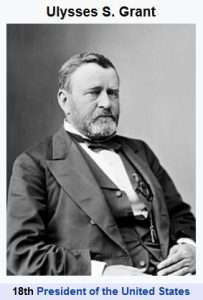 4) William James Grant (1829-1866) who was an English painter born in Hackney, East London, 5) Anne Macvicar Grant (1755-1838) who was a Scottish poet born in Glasgow known for her works Memoirs of an American Lady and Letters from the Mountains, 6) Charles William Grant (1878-1943) who was a Senator of Tasmania, Australia in 1925, having been born in Hobart, 7) General Sir Charles Cecil Grant (1877-1950) who was a British Army officer born in London, England who served in the Second Boer War, World War I, and World War II, 8) Brian Wade Grant (1972) who was a professional American basketball player in the NBA, born in Columbus, Ohio who played for five different NBA teams from 1994-2006, 9) Bob Grant (1929-2013) who was an American radio host born as Robert Ciro Gigante in Chicago, Illinois, considered to be a pioneer of the conservative talk radio industry, 10) Daniel Frederick Grant (1945) who was a Canadian hockey player who played in the AHL and NHL from 1964-1882, and 11) Elizabeth Woolridge Grant (1985) who is an American singer and songwriter known as Lana Del Ray, born in New York City, whose music is known for his tragic romance and melancholia.
4) William James Grant (1829-1866) who was an English painter born in Hackney, East London, 5) Anne Macvicar Grant (1755-1838) who was a Scottish poet born in Glasgow known for her works Memoirs of an American Lady and Letters from the Mountains, 6) Charles William Grant (1878-1943) who was a Senator of Tasmania, Australia in 1925, having been born in Hobart, 7) General Sir Charles Cecil Grant (1877-1950) who was a British Army officer born in London, England who served in the Second Boer War, World War I, and World War II, 8) Brian Wade Grant (1972) who was a professional American basketball player in the NBA, born in Columbus, Ohio who played for five different NBA teams from 1994-2006, 9) Bob Grant (1929-2013) who was an American radio host born as Robert Ciro Gigante in Chicago, Illinois, considered to be a pioneer of the conservative talk radio industry, 10) Daniel Frederick Grant (1945) who was a Canadian hockey player who played in the AHL and NHL from 1964-1882, and 11) Elizabeth Woolridge Grant (1985) who is an American singer and songwriter known as Lana Del Ray, born in New York City, whose music is known for his tragic romance and melancholia.
Blazons & Genealogy Notes
2) (Clarie, and Leaston). Gu. a lion pass. guard. ar. imperially crowned ppr. betw. three antique crowns or. Crest—A boar’s head couped ppr. Motto—Stabit conseius aequi.
3) (Lurg). Gu. a lion ramp. or, in his dexter forepaw a crescent ar. betw. three antique crowns of the second. Crest—A hill, on the top of which is a forest all ppr. Motto—Stabilis.
4) (Easter Elchies, co. Banff). Gu. a lion ramp. betw. three antique crowns or. Crest—A unicorn’s head and neck ar. Supporters—Two griffins ppr. beaked and membered gu. collared and chained or. Motto—Audentior ito.
5) (Rothiemurchus, co. Elgin). Quarterly, 1st and 4th, gu. three antique crowns or; 2nd, or, a fess chequy az. and ar. betw. three wolves’ heads couped sa., for Stewart, of Athole; 3rd, az. a dexter hand vambraced holding a sword erected in pale az. hilted and pommelled or, betw. three boars’ heads couped of the third, for Gordon, all within a bordure wavy or. Crest—A dexter hand and arm armed, holding a broadsword ppr. Mottoes—Pro patria; and, In God is all my trust.
6) (Ballindalloch, co. Elgin; later family, a branch of Rothiemurchus). Gu. a target ppr. betw. three antique crowns or. Crest—A dexter hand grasping a dirk ppr. Motto—Ense et animo.
7) (MacPherson-Grant of lnvereshie and Ballindalloch, bart., 1838). Quarterly, 1st and 4th, as the last; 2nd and 3rd, per fess or and az. a lymphad of the first, mast, oars, and tacklings ppr. ensigned gu. betw. a hand couped fessways, holding a dagger in pale in the dexter canton, and in the sinister a cross crosslet fitchee. a bordure gu., for Macpherson. Crest—A dexter hand holding a dirk in pale. Mottoes —Above the crest: Ense et animo; and below the shield: Touch not the cat, but a glove.
8) (Monymusk, co. Aberdeen, bart., 1705). Gu. three antique crowns within a bordure erm. Crest—A Bible displ. ppr. Supporters—Two angels ppr. Mottoes—Above the crest: Suum cuique; below the arms: Jehovah Jireh.
9) (Prestongrange, co. Haddington; represented by Sir George Grant-Suttie, Bart., and Dundas, of Arniston, as heirs of line. See Grant-Suttie). Gu. three antique crowns or, within a bordure erm. on a canton ar. a demi otter issuing out of a bar waved sa. Crest—A Hereulcs’ head ppr. Motto—Non inferiora secutus.
10) (Corrimony, co. Inverness). Gu. three antique crowns or, within a bordure chequy of the second and first. Crest—A demi savage ppr. Motto—I’ll stand sure.
11) (Shewglie and Bedcastle). Gu. on a fess ar. betw. three antique crowns or, a lion pass. guard, of the first, imperially crowned ppr. Crest—A banyan tree ppr. Motto—Bevirescimus.
12) (Baron Glenelg). Gu. on a fesse betw. three antique crowna or, a lion pass. guard. of the field, imperially crowned ppr. betw. two cinquefoils also of the first. Crests—1st: A burning mount ppr.; 2nd: A banyan tree also ppr. Supporter—Dexter, a tiger; sinister, a stag, both ppr. the latter gorged with an eastern crown or. Motto—Stand fast.
13) (Sir Patrick Grant G.C.B., 1861). Gu. three antique crowns or, a bordure of the second charged with three wreaths of laurel vert. Crest—A burning mountain ppr. Motto—Stand fast.
14) (Gartinbeg, 1672). Gu. three antique crowns or, a bordure engr. of the second. Crest—The trunk of an oak- tree sprouting out some leaves with the sun shining thereon ppr. Motto—Te favente virebo.
15) (Dalvey, co. Elgin, bart., 1688). Arms, Crest, and Motto, as the last. Supporters—Dexter, a Highlander; sinister, a negro, both ppr.
16) (Sir Maxwell Grant, K.C.B., 1816). Gu. three antique crowns within a bordure engr. ar. pendent from middle chief a representation of the cross conferred on him for his conduct in the Peninsula, the Pyrenees, Nivelle, the Nive, and Orthes, on a chief embattled ar. a tower of the first betw. a sword, hilt upwards, encircled with a garland of laurel all ppr. on the dexter, and on the sinister, the badge of the Ottoman order of the Crescent pendent by a ribbon all ppr. Crest—The stump of an oak tree sprouting forth fresh branches, the sun looking down thereon ppr. Mottoes— Above the crest: Te favente virebo; below the shield: Valour and loyalty.
17) (Glenlochy, afterwards Kilgraston, co. Perth). Gu. a chev. erm. betw. three antique crowns or. Crest—A mountain in flames ppr. Motto—Ferte cito flammas.
18) (Sir James Hope Grant, G.C.B., 1861). As the last, within a bordure embattled or. Same Crest and Motto. Also additional Crest—A Roman fasces erect ppr., and Motto—Leges juraque serva.
19) (Carron, co. Banff), Gu. a dove ar. holding in her beak an olive branch vert betw. three antique crowns or. Crest—An adder nowed, with the head erect ppr. Motto—Wise and harmless.
20) (Ballindalloch, 1672). (Wester Elchies, co. Banff, 1811). Gu. a boar’s head couped betw. three antique crowns or. Crest—An oak tree ppr. Motto—Suo se robore firmat.
21) (Dunlugas, co. Banff). The same, within a bordure or. Crest—A dexter hand, holding a branch of oak ppr. Motto—Radicem firmant frondes.
22) (Auchernack, co. Aberdeen). Gu. a star of seven points wavy ar. betw. three antique crowns or. Crest—A burning hill ppr. Motto—Stand sure.
23) (Lewis Grant, Adjutant of Chelsea College, 1780). Gu. a cross pattee fitchee ar. betw. three antique crowns or, a bordure invecked of the second. Crest—A two-handed sword in bend ppr. hilted and pommelled or, over a man’s head of the first. Motto—Have at you.
24) (Sir William Keir-Gbant, of Blackburn, Knt. of the Imperial Order of Maria Teresa, in Germany, 1794). Quarterly, 1st and 4th, gu. a cinquefoil ar. betw. three antique crowns or; 2nd, or, on a cross engr. sa. cantoned with four roses gu. three lozenges or, for Keir; 3rd, ar. a saltire and chief gu. with a mullet in dexter chief, a bordure indented of the second, for Bruce, of Wester Kinloch; en surtout, a medal or, charged with a profile of Francis II., Emperor of Germany, with legend, “Imp. Caes. Franciscus II.; P. F. Aug.” Crest—An arm in armour embowed grasping a sword all ppr. Motto—Fortitudine.
25) (Aberlour, co. Banff, 1810). Gu. three antique crowns or, in fess point a dexter arm in armour fessways couped ppr. garnished or, holding a cross crosslet fitchee of the last. Crest—A burning mountain ppr. Motto—Stabit.
26) (Litchborough). Gu. a fesse dancetttee erm. betw. three crowns or. Crest—A conical hill fired at the summit ppr. issuant therefrom a cross calvary or. Motto—Stand sure.
27) (Hillersdown House, co. Down). Gu. a boar’s head couped in fesse betw. three eastern crowns or. Crest—An oak tree fructed ppr. Motto—Suo se robore firmat.






